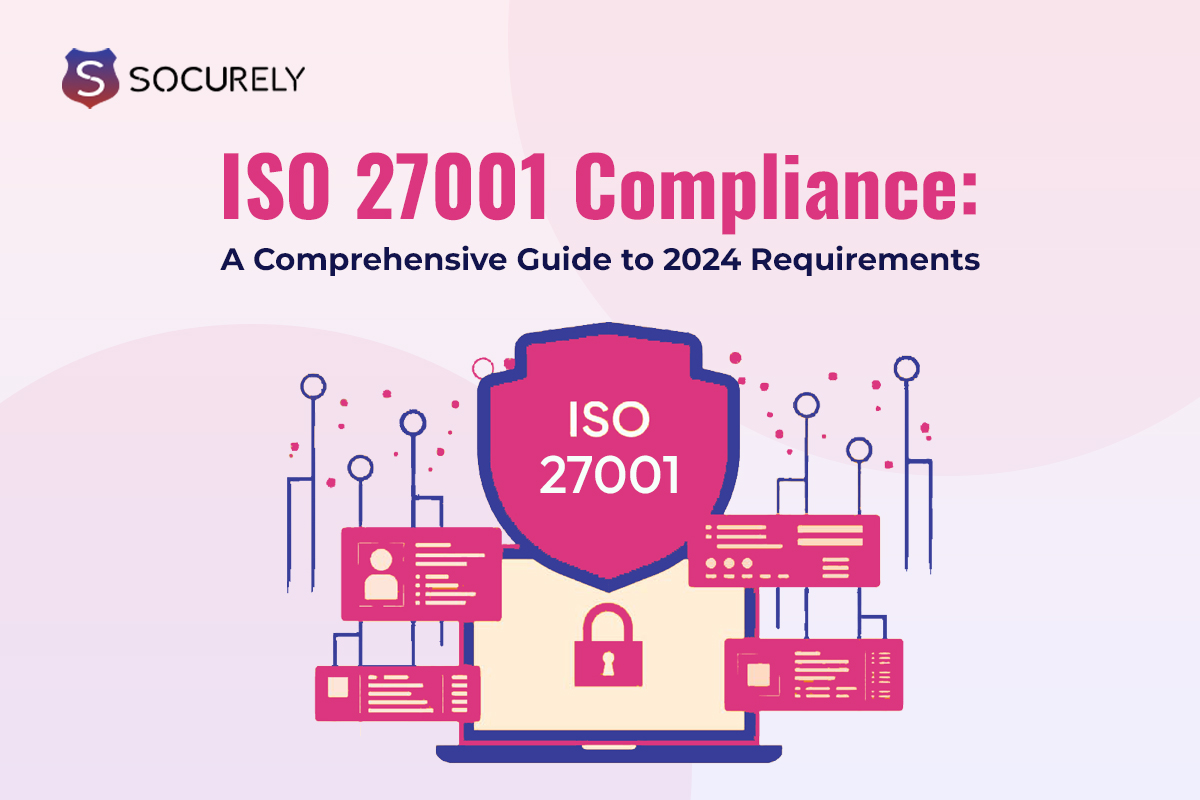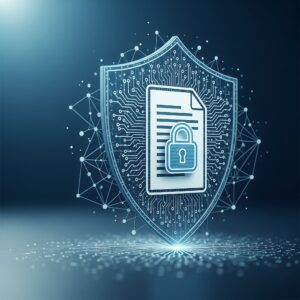The ISO 27001 Compliance Certification is a set of requirements that includes ISMS policies, procedures, and more. Organizations must match their security standards to the specific 11 clauses mentioned in the ISO 27001 part 1 requirements to receive ISO 27001 certification.
But when do you need compliance for your company?
Once you understand the value and scope of ISO 27001 Compliance for your company, you will start implementing it. Also, it is the time when you should consult with the experts dealing with the ISO 27001 key requirements.
What is ISO 27001 Compliance & Requirements?
ISO 27001, an internationally recognized standard, outlines the requirements for establishing, implementing, maintaining, and continually improving an Information Security Management System (ISMS).
Establishing a sufficient amount of resources for the creation, use, administration, and ongoing enhancement of the information security management system (ISMS) is one of the requirements of ISO 27001. The ISO 27001 standard outlines the conditions that must be met by businesses to establish a strong ISMS, including risk management and policies.
It is the road map for creating an extensive and efficient ISMS with the list of ISO 27001 key requirements, allowing you to concentrate on what matters—keeping your company’s information assets safe and secure.
What are the benefits of ISO 27001 requirements?
Understanding the benefits of adhering to ISO 27001 requirements goes beyond mere compliance—it becomes a strategic investment in your organization’s security posture.
- Firstly, ISO 27001 provides a systematic approach to identifying, managing, and mitigating information security risks, fostering a culture of resilience.
- This framework instills confidence among stakeholders, including customers and partners, enhancing your organization’s reputation for robust security practices.
- Additionally, by aligning with ISO 27001 requirements, you demonstrate a commitment to legal and regulatory compliance, paving the way for smoother audits and avoiding potential legal pitfalls.
- Ultimately, the proactive adoption of ISO 27001 requirements empowers organizations to stay ahead of emerging threats, ensuring the confidentiality, integrity, and availability of critical information assets.
* Note- You must align your ISMS (Information Security Management Systems) with ISO 27001 criteria to receive ISO 27001 certification. These specifications are meant to assist enterprises in developing, maintaining, and enhancing their ISMS posture over time.
List of 7 ISO 27001 Key Requirements
Every five years, the International Standards Organization modifies the ISO 27001 standards. The identical two-part framework used in ISO 27001:2013 criteria is also used in the most current edition, ISO 27001:2022.
Eleven clauses in Part I provide a high-level overview of the specifications and crucial paperwork your company must utilize while developing an ISMS. To comply with the ISMS requirements, firms can apply the 93 recommended controls found in Part 2.
Clause 0-3-
The overall objective of the security standards and the range of requirements for ISO 27001 certification are described in detail in clauses 0 through 3 of the ISO 27001 recommendations.
These clauses define commonly used terms and provide context through normative references, even though they don’t explicitly contain ISO 27001 criteria. Instead, they set the stage for the rest of the standard.
Requirement #1: ISMS Scope
Specifying the scope of an organization’s ISMS design and implementation project is the first requirement in clause 4. This scope document provides context for the implementation’s bounds and selected controls based on the particular requirements of the company, such as its industry, the compliance standards it must follow, and the stakeholder expectations of its clients.
The ISMS varies from organization to organization based on:
- Pertinent internal and external stakeholders
- Requirements for regulatory compliance
- Industry-specific security guidelines
- Contractual obligations and client needs
- Internal resources accessibility
The business must produce an ISMS Scope document describing the implementation procedure and how teams will track and enhance the ISMS to comply with this requirement. This document provides the crucial background information auditors need to assess an organization’s ISMS architecture and controls.
Requirement #2: Demonstrated Commitment
Teams need top leaders’ unambiguous commitment for an ISMS implementation to succeed. This commitment is particularly important for businesses that want to become ISO 27001 certified because the project will need constant time and resource investment.
Clause 5’s second requirement is that an information security policy statement be drafted and approved by the senior leadership team. This policy shows clients, staff, and auditors how committed the leadership is to the project. It also outlines the roles that are involved in putting the ISMS into practice, keeping an eye on it, and maintaining it, giving teams or individual team members specific duties.
Requirement #3: Clear Security Objective
Determining the business rationale and risk management approach that an ISMS deployment is intended to support is covered in clause 6 of the ISO 27001 ISMS criteria. Assessing security risks and possibilities to improve security procedure management is the first step in developing relevant security objectives.
Companies need to set quantifiable security goals that define implementation success and demonstrate that the ISMS is functioning as intended, taking into account the risk assessment and the company’s strategic objectives. These goals help organizations plan projects for ISMS adoption and enhancement, and they also help them monitor KPIs to assess the projects’ success.
Requirement #4: Provision And Allocation Plan
Clause 7 outlines how the business will continue to provide resources for improvement. Successful ISMS deployment and maintenance require constant resource allocation.
Clause 7 mandates that companies furnish the following information to guarantee that the business maintains its ISMS appropriately:
- Documented evidence of proficiency demonstrating team members’ ability to efficiently administer, keep an eye on and maintain the ISMS.
- Verification of the knowledge of all staff members on their roles as outlined in the Information Security Policy Statement and the significance of upholding the ISMS.
- A communication strategy outlining the frequency and method by which teams communicate with stakeholders and other impacted parties about the ISMS.
- Comprehensive paperwork that outlines the team’s plan for meeting project goals and the resources required to produce the intended outcomes, including policies, procedures, and metrics reporting.
These ISO 27001-mandatory documents outline how staff members will contribute to the system’s continuous improvement and demonstrate to auditors that the business has the resources necessary to sustain the ISMS.
Requirement #5: Operation And Process Plan
The procedures required to implement and maintain the ISMS are covered in the documentation mandated by clause 8. To comply with this criterion, businesses must produce a risk assessment (which they can utilize to specify the goals outlined in clause 5) and record the frequency at which the team will carry out future risk assessments.
Following receipt of a risk assessment report, an organization will draft a risk treatment plan outlining the steps it will take to reduce risk. Businesses that undertake risk mitigation methods need to keep thorough records of the steps they’re taking to reduce risk and adhere to the guidelines in their risk treatment strategy.
Requirement #6: Measuring Process
Companies must create ISO 27001 processes to monitor, assess, and evaluate ISMS performance to comply with these criteria. These processes extend beyond gauging the accomplishment of Clause 5’s goals. Companies must also develop a plan for tracking individual control performance by Clause 9.
The timing and frequency of ISMS audits by staff members and senior leadership are also outlined in Clause 9. The minimum requirement for internal audits and management reviews is once a year, while certain firms can need more frequent audits. The internal audit standards outlined in ISO 27001 produce reports that demonstrate the auditors’ continuous dedication to enhancing the ISMS.
Requirement #7: Logging Process Improvement
No business can consistently maintain compliance. Having a plan to address nonconformities with corrective action is part of being ready for new risks. Clause 10 calls for making a plan to deal with these situations and recording the adjustments made to resolve the problem.
Companies must also record chances for improvement by Clause 10. A single compliance with an ISO 27001 requirements list is not sufficient for ISO 27001 certification. Businesses need to understand that their ISMS is an ongoing project that requires frequent testing, monitoring, and iterative development. Teams must keep a record of every modification they make as well as any chances for improvement they discover via audits or testing.
Does ISO 27001 Part 2 also contain requirements?
Annex A, the second part of ISO 27001, lists every suggested control that businesses should apply as part of their ISMS. Annex A functions as a checklist of ISO 27001 requirements, describing the four types of controls necessary for ISO IEC 27001 compliance.
- Individual/User Controls
- Controls Within Organizations
- Controls Technology
- Controls in Physical Form
Although Annex A provides implementation advice, this part does not contain any mandatory requirements. However, completing a Statement of Applicability document utilizing Annex A is a prerequisite for ISO 27001 certification. Companies are required to review each of the 93 controls in Annex A and identify whether they are applying it in the Statement of Applicability. If not, they have to justify why that control is unnecessary or outside the purview of their implementation.
Conclusion
Embarking on the journey to ISO 27001 compliance is not just a mandate; it’s a strategic investment in fortifying your organization against evolving cyber threats. The comprehensive guide provided here illuminates the critical ISO 27001 requirements, elucidating the path to creating a robust Information Security Management System (ISMS).
To steer your organization toward a secure and compliant future, engage with the experts at Socurely who specialize in tailoring ISO 27001 compliance key requirements to your unique needs. Elevate your cybersecurity posture and instill confidence among stakeholders with Socurely as your trusted compliance partner.







